The Ferguson Fire, which has been burning on the western edge of Yosemite since July 13th, is now 100% contained. The other major fires in California, like the Mendocino Complex and Carr fires, are still burning, but nearing containment. Skies around the state have become much less smoky over the last week or two.
Tragically, two firefighters died battling the Ferguson Fire, but no homes were lost. We were lucky around here compared to the people in Redding, where the Carr Fire destroyed over 1,000 homes, and eight people lost their lives.
The human cost from such fires can be devastating, but people are resilient, and when communities come together they can help each other pull through and recover from the loss.
Nature recovers more effortlessly. Most ecosystems in the western United States are adapted to fire, and are designed to respond to fire. The cones of many western conifers, including giant sequoias, open and release their seeds only after a fire. Wildflowers also sprout after fires, taking advantage of the bare soil and newly-opened forests to bloom in places where they haven’t blossomed for decades. Grazing animals like deer and bears follow the flowers.
Claudia and I have lived in and near Yosemite for over 30 years, and have seen many fires over that time. Our first experience with a major fire was when nearly simultaneous lightning strikes started the A-Rock and Steamboat fires near the western edge of the park on August 7th, 1990. Our son Kevin was born nine days later, and we had to get special permission to drive out of Yosemite Valley via still-closed Highway 120 to get to the birthing center in Sonora. Our fire baby.
We’ve since dealt with many other fires in our area: the Ackerson Fire, the Telegraph Fire, the Big Meadow Fire, the Detwiler Fire, the Meadow Fire next to Half Dome, the El Portal Fire, the Motor Fire, the Walker Fire, the monstrous Rim Fire, and so many others I can’t remember them all.
Living for so long in a fire-prone area gives us some perspective. We’ve experienced the anxiety when a fire burns near our home, or near our friend’s homes. We’ve mourned when homes or lives are lost. But we’ve also seen regrowth.
The area burned by the Steamboat fire now hosts some of the best dogwood displays in Yosemite. The Telegraph Fire preceded the most brilliant poppy bloom I’ve ever seen in the Merced River Canyon. The Big Meadow and Rim fires opened up some of the dense forests near Crane Flat, and created a beautiful mixture of forests and flower gardens. We’ve watched bears grazing among the lupines after the Big Meadow Fire.
The Ferguson Fire burned through much of the Merced River Canyon, west of Yosemite. Will there be another exceptional poppy bloom next year? We’ll see. But in the meantime, here are some of my photographs made in the wake of previous fires. I hope these images serve as a reminder that nature always bounces back.
— Michael Frye
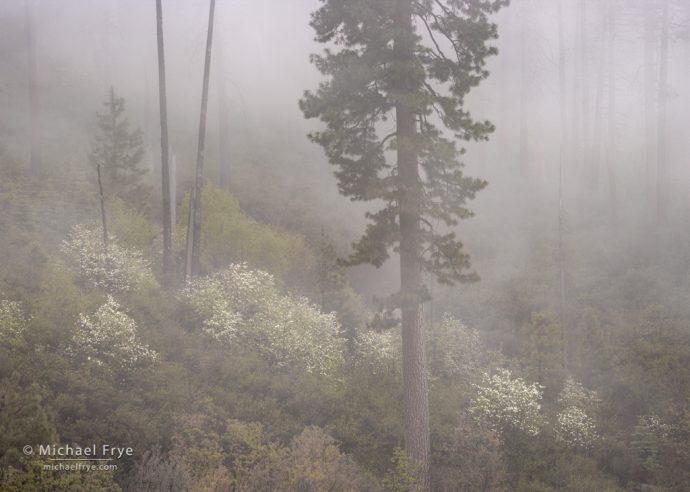
Dogwoods and ponderosa pine in fog, in the footprint of the Steamboat Fire along Highway 41, Yosemite
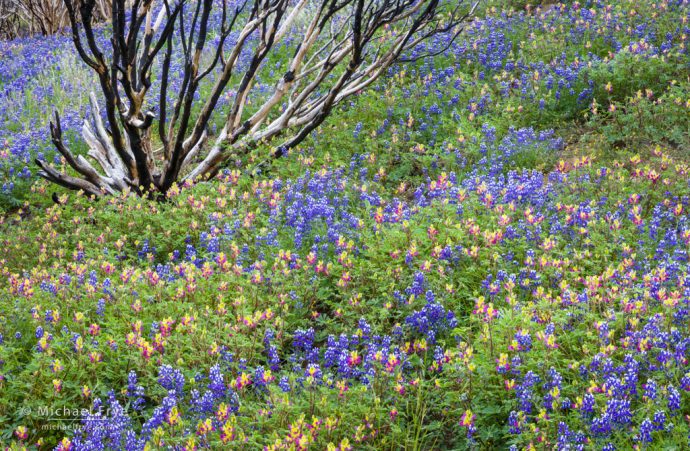
Lupines, harlequin lupines, and burned manzanita bush near Foresta after the Big Meadow Fire, Yosemite
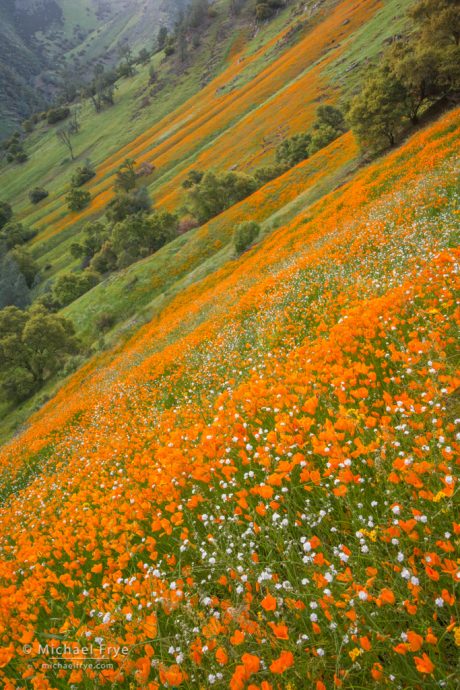
Poppies and popcorn flowers in the Merced River Canyon, 2009. This area didn’t burn in the Telegraph Fire, but was fertilized by its ash. This hillside did just burn in the Ferguson Fire.
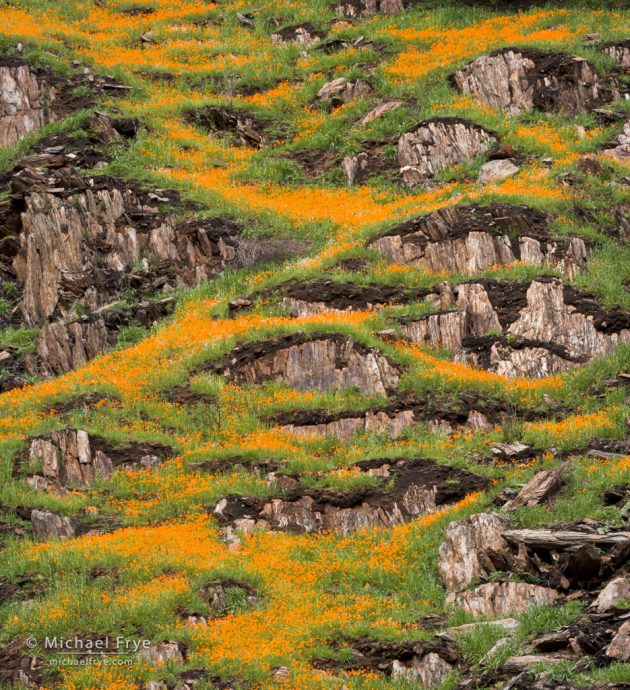
California poppies zigzagging across a hillside in the Merced River Canyon, 2009, in an area burned by the Telegraph Fire
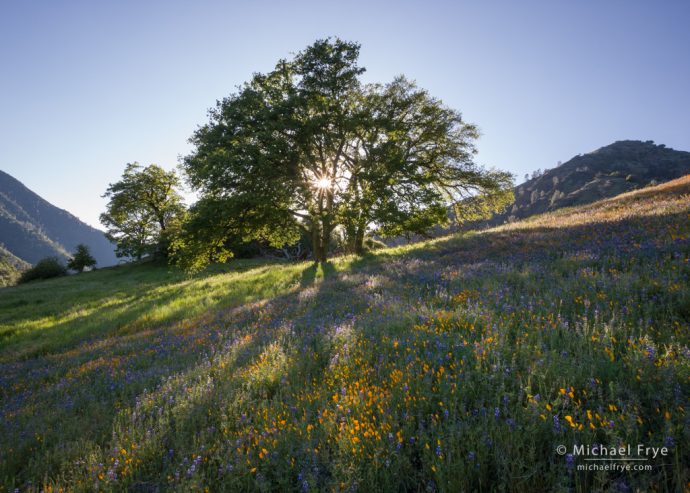
Poppies, lupine, and oaks, late afternoon, Sierra Nevada foothills near El Portal, in an area burned by the A-Rock Fire
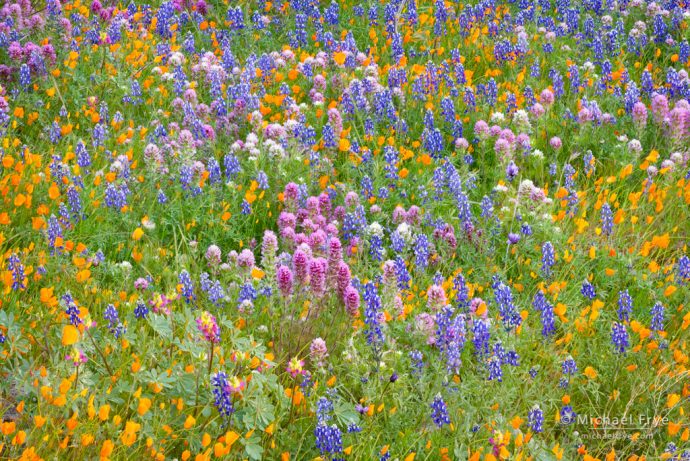
Wildflower mix—poppies, lupine, harlequin lupine, and owl’s clover, near El Portal, in an area burned by the A-Rock Fire
Related Posts: After the Fire; Adapting to Fire
Michael Frye is a professional photographer specializing in landscapes and nature. He is the author or principal photographer of The Photographer’s Guide to Yosemite, Yosemite Meditations, Yosemite Meditations for Women, Yosemite Meditations for Adventurers, and Digital Landscape Photography: In the Footsteps of Ansel Adams and the Great Masters. He has also written three eBooks: Light & Land: Landscapes in the Digital Darkroom, Exposure for Outdoor Photography, and Landscapes in Lightroom: The Essential Step-by-Step Guide. Michael has written numerous magazine articles on the art and technique of photography, and his images have been published in over thirty countries around the world. Michael has lived either in or near Yosemite National Park since 1983, currently residing just outside the park in Mariposa, California.

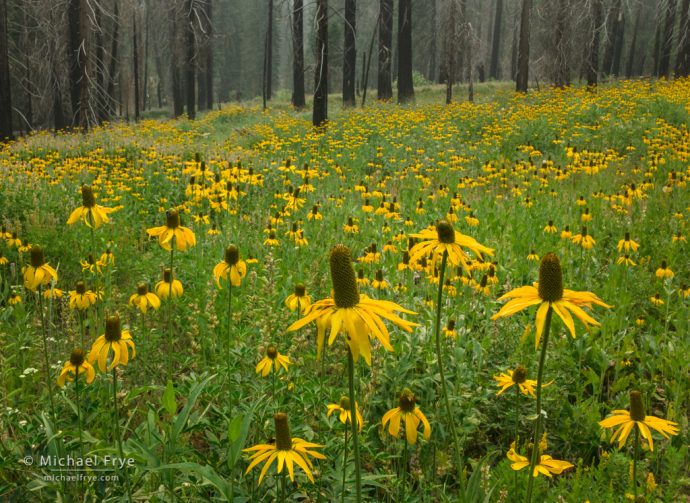
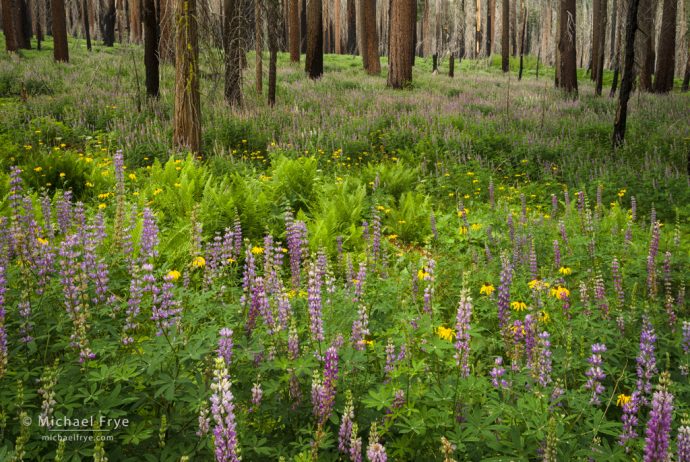
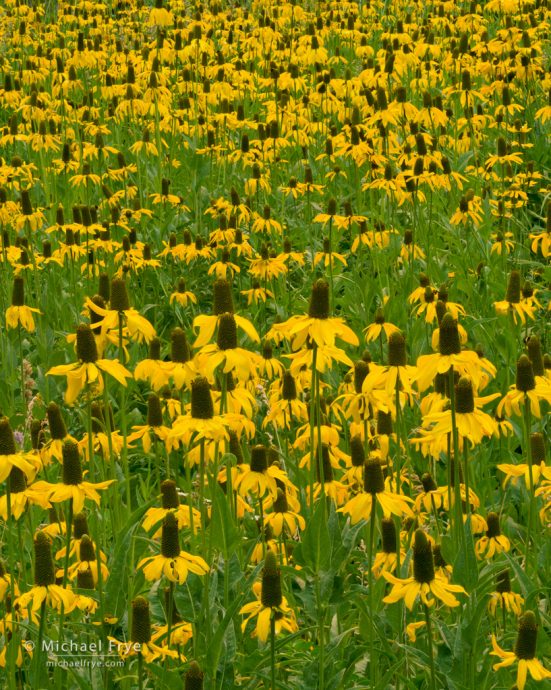








Those are really beautiful Michael. Thank you for reminding us of the beauty still around us. I never tire of seeing such a spectacular display of color as that of wildflowers in bloom.
Thank you for the kind words John!
Boy howdy if these just don’t brighten my mood as I look out of our family room window at sky saturated with smoke from fires to our south, east and north. Thank you Michael! Brian.
Thanks Brian. Sorry to hear that skies are so smoky in your neighborhood.
Thank you for this uplifting perspective on the fires.
You’re welcome Vicky – thanks!
Nicely written blog and beautiful shots! Gives me hope!
Thanks Rick!
Thank you so much for your information, what a joy nature is after the fires.My family have gone from England to live in Bootjack and love it there. I of course hated to hear about the fires as I am in England so far away from them, but the firemen and women were as you know wonderful.Thank God for all the help they gave .Thanks again ,photos are lovely .
You’re welcome Sue, and thank you. Luckily the Ferguson Fire never got that close to Bootjack, but I hope your family stays safe in the future.
Wow your photos are stunning! I especially love the zigzagging poppies. Uplifting blog too thanks. The river fire started 7 miles away from my house.
Thanks Cathy. It seems like most people who live in California have fire stories to tell, doesn’t it? I hope the River Fire never got any closer to you.
Such beautiful photos of wonderful flowers and rebirth to come out so much devastation.
Thank you Terry!
A beautiful post! Thank you for sharing.
The picture with the zigzagging poppies is spectacular!
Thank you Maya!
Nature is gorgeous and so are you images Michael
Thank you Felicia!